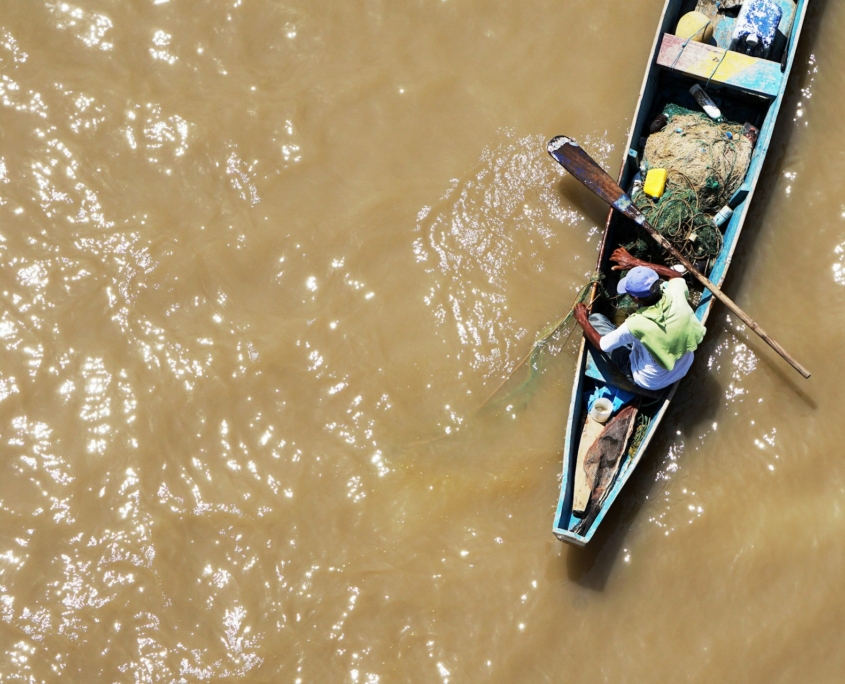Princeton’s Breakthrough Solar-Powered Water Purification Gel
 According to the World Bank, about two billion people around the world lack access to safely managed drinking water services. Among them, 771 million people cannot access even basic drinking water services. Researchers at Princeton University have developed a solar-powered gel that cleans water, potentially addressing the global clean water crisis. This gel marks an advancement in technology initially developed in 2021. Xiaohui Xu, a post-doctoral fellow at Princeton, led the development in his lab. Xu collaborated with Nehemie Guillimaitre, a graduate student in chemical and biological engineering, to author the initial study.
According to the World Bank, about two billion people around the world lack access to safely managed drinking water services. Among them, 771 million people cannot access even basic drinking water services. Researchers at Princeton University have developed a solar-powered gel that cleans water, potentially addressing the global clean water crisis. This gel marks an advancement in technology initially developed in 2021. Xiaohui Xu, a post-doctoral fellow at Princeton, led the development in his lab. Xu collaborated with Nehemie Guillimaitre, a graduate student in chemical and biological engineering, to author the initial study.
New Water Purification Technology
The solar-powered gel, known as a hydrogel, features a sponge-like structure that absorbs dirty water and filters out harmful contaminants such as bacteria, oils, salts and microplastics. This hydrogel comprises polymers—long chains of molecules that repel pollutants from its surface. Structurally, the hydrogel’s internal threadlike molecules mimic the interconnected fibers of a loofah fruit, a common kitchen scrubbing sponge. It efficiently absorbs, filters and releases water, cleaning a gallon in less than 10 minutes.
Testing and Efficacy of the Gel
While previous water purification devices required significant energy, this solar-powered gel stands out as low-cost, accessible and efficient, relying solely on sunshine for power. The warmer the temperature, the faster the gel releases water, due to the weakening grip of the gel’s molecules. At temperatures of 33 degrees Celsius or higher, the gel can release more than 70% of the absorbed water in under 10 minutes. This sponge-like technology’s fibrous structure enables its remarkable filtration and absorption speed.
Xu and her research team tested the gel’s effectiveness by placing it in water contaminated with E. coli, a bacteria that can cause life-threatening illnesses. Upon removal from the tainted water, the solar-powered gel successfully repelled all bacteria.
Ongoing Development and Broader Implications
Researchers believe the low-cost and easy-to-use solar absorber gel could be implemented globally to aid poverty-stricken areas where access to clean water is unreliable. Dirty water causes over 1.5 million deaths annually. The Princeton team is continuing to develop household prototypes and believes the gel could also be beneficial in emergency situations.
The gel’s capacity to shrink in warmth and expand in cool temperatures could enhance robotics by enabling machines to move and conform in various ways. Additionally, this gel could dehydrate liquids like milk or orange juice, simplifying shipping processes and it could extract water from blood for simpler storage.
Researchers aim to develop and modify the design of the solar-powered gel, finding new ways to enhance the technology. “Through our work, we have been able to show that fundamental research may have a significant impact on society,” Guillomaitre stated. “Ideally, this technology could one day be used by anyone concerned about their water quality, regardless of where they live.”
Looking Forward
The development of solar-powered gel technology at Princeton University holds transformative potential for global water purification efforts. As this innovation progresses toward wider adoption, it promises to significantly improve access to clean water in underserved communities worldwide. The continued refinement and application of this technology could herald a new era of sustainability and health.
– Jacob Buckner
Jacob is based in Raleigh, NC, USA and focuses on Technology and Solutions for The Borgen Project.
Photo: Unsplash
